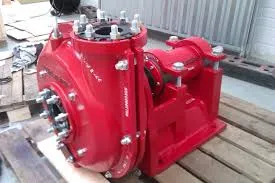Kannada
- Afrikaans
- Albanian
- Amharic
- Arabic
- Armenian
- Azerbaijani
- Basque
- Belarusian
- Bengali
- Bosnian
- Bulgarian
- Catalan
- Cebuano
- Corsican
- Croatian
- Czech
- Danish
- Dutch
- English
- Esperanto
- Estonian
- Finnish
- French
- Frisian
- Galician
- Georgian
- German
- Greek
- Gujarati
- Haitian Creole
- hausa
- hawaiian
- Hebrew
- Hindi
- Miao
- Hungarian
- Icelandic
- igbo
- Indonesian
- irish
- Italian
- Japanese
- Javanese
- Kannada
- kazakh
- Khmer
- Rwandese
- Korean
- Kurdish
- Kyrgyz
- Lao
- Latin
- Latvian
- Lithuanian
- Luxembourgish
- Macedonian
- Malgashi
- Malay
- Malayalam
- Maltese
- Maori
- Marathi
- Mongolian
- Myanmar
- Nepali
- Norwegian
- Norwegian
- Occitan
- Pashto
- Persian
- Polish
- Portuguese
- Punjabi
- Romanian
- Russian
- Samoan
- Scottish Gaelic
- Serbian
- Sesotho
- Shona
- Sindhi
- Sinhala
- Slovak
- Slovenian
- Somali
- Spanish
- Sundanese
- Swahili
- Swedish
- Tagalog
- Tajik
- Tamil
- Tatar
- Telugu
- Thai
- Turkish
- Turkmen
- Ukrainian
- Urdu
- Uighur
- Uzbek
- Vietnamese
- Welsh
- Bantu
- Yiddish
- Yoruba
- Zulu
Telephone: +86 13120555503
Email: frank@cypump.com
ಡಿಸೆ . 12, 2024 05:32 Back to list
slurry pump data sheet
Understanding Slurry Pump Data Sheets A Guide to Selecting the Right Pump for Your Application
In the world of industrial processes, the effective transportation of slurries—mixtures of solids and liquids—plays a crucial role in various sectors, including mining, wastewater treatment, and chemical manufacturing. To ensure optimal performance and longevity of slurry pumps, it is essential to understand the data sheets associated with them. In this article, we will explore the key elements of a slurry pump data sheet and how to use this information in selecting the right pump for your application.
Key Components of a Slurry Pump Data Sheet
1. Pump Type and Design The data sheet typically begins with the pump type and its design features. Slurry pumps can vary significantly in construction depending on the mode of operation—horizontal, vertical, submersible, or cantilevered designs are all common. Understanding the design is vital to assessing suitability for your specific application and operational requirements.
2. Performance Curves Performance curves are graphical representations of pump efficiency and capacity. They illustrate flow rates against the head (the height to which the pump can raise the slurry) at different speeds or impeller diameters. By analyzing these curves, you can determine the optimal operating point of the pump and how it will handle varying slurry densities and viscosities.
3. Flow Rates and Operating Conditions Data sheets provide maximum and minimum flow rates that the pump can handle under various conditions. Knowing your required throughput is essential for proper pump selection. Additionally, the data sheet will specify the permissible operating conditions, including temperature and pressure limits, that could affect pump performance and durability.
slurry pump data sheet

4. Material of Construction The materials used for the pump components, such as the casing, impeller, and wet ends, are crucial in determining its suitability for different types of slurries—whether they are abrasive, corrosive, or a combination of both. Common materials include high chromium alloys, rubber linings, and stainless steel. Pay close attention to the materials listed in the data sheet to ensure they match the chemical and physical properties of your slurry.
5. Net Positive Suction Head (NPSH) NPSH is a critical factor that indicates the pressure available to prevent cavitation (formation of vapor bubbles) in the pump. Data sheets will specify both NPSH required and available NPSH for the system. Proper matching is necessary to avoid performance issues and potential pump damage.
6. Efficiency Ratings Pump efficiency is a critical cost factor over a pump's lifecycle. The data sheet usually contains information regarding the hydraulic efficiency and overall efficiency of the pump. Higher efficiency ratings mean less energy consumption and lower operating costs, making it an important consideration in pump selection.
7. Maintenance and Service Information A good data sheet will also outline maintenance requirements and common service intervals. This information is vital for ensuring the longevity and reliability of your pump. It may also outline potential wear parts and how easily they can be replaced, which can affect long-term operational costs.
Conclusion
In summary, understanding a slurry pump data sheet is paramount in selecting the right pump for your specific application. By carefully analyzing components such as performance curves, material of construction, efficiency ratings, and maintenance requirements, you can ensure that your chosen slurry pump meets the operational demands effectively. Making an informed decision will not only enhance the efficiency of your process but also extend the lifespan of your equipment, leading to significant cost savings in the long run. Always remember, the right pump can make all the difference in achieving optimal performance in slurry transportation tasks.
-
High-Performance Air Pumps for Sand & Gravel | Efficient Transport
NewsAug.03,2025
-
ISG Series Vertical Pipeline Pump - Chi Yuan Pumps Co., LTD.|Energy Efficiency, Corrosion Resistance
NewsAug.03,2025
-
ISG Series Pipeline Pump - Chi Yuan Pumps | Energy Efficiency&Compact Design
NewsAug.03,2025
-
ISG Series Vertical Pipeline Pump - Chi Yuan Pumps Co., LTD.|High Efficiency, Low Noise, Durable
NewsAug.02,2025
-
ISG Series Vertical Pipeline Pump - Chi Yuan Pumps | High Efficiency, Low Noise
NewsAug.02,2025
-
ISG Series Vertical Pipeline Pump- Chi Yuan Pumps Co., LTD.|High Efficiency&Compact Design
NewsAug.02,2025










